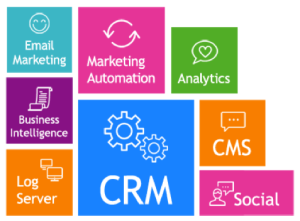
Marketers today have a tech solution for every day of the week. There are solutions for marketing automation, data, sales ready leads, market research, CRM, analytics, content management, PR, and branding – the list goes on – and with artificial intelligence (AI) and machine learning well integrated.
AI has dramatically impacted the MarTech stack, transforming how marketers operate and interact with their technology tools, while also enabling them to strategize more effectively. AI allows marketers to automate repetitive tasks, enhance personalization through in-depth customer data analysis, and optimize decision-making by leveraging existing marketing and sales data to identify patterns, forecast future trends, and anticipate customer needs. According to G2 in a recent study of MarTech Trends, AI integration in the MarTech stack is soaring, with 75% of businesses reporting AI adoption.
The custom-built versus the single-solution MarTech stack
Managing all the numerous dashboards in a MarTech stack can become overwhelming pretty quickly! Marketers seem to be in one of two camps: build a custom marketing technology stack or purchase a single solution that aspires to do everything. The advantage of a custom stack is that it affords the flexibility and retained control to carefully select each aspect of the marketing strategy dashboard, ensuring it is a fit for the business. Unfortunately, these various tools can have limited, if any, interconnectivity, which leaves marketers to act as the ‘glue’ between the platforms.
According to G2, 29% of marketers prioritize integration capabilities as the most crucial aspect when evaluating new marketing technologies. However, 51% of marketers admitted that integration challenges had hindered their adoption of new technologies.
Consequently, building and operating a custom marketing stack comprised of tech solutions requires more than simply presenting a list of each tool and its function. It needs its own integrative strategy that unites all its components. A custom stack requires much closer management and a “champion within marketing.” Inevitably, when that individual leaves their position or the company, the stack often crumbles.
With a custom marketing stack, marketers are expected to play the role of ringmaster to some degree. However, clients and other leading industry experts tell us that the tactic of marketers acting as middlemen (or women) between numerous tools has become excessive. Marketers have more on their plates than ever, and many have added Inter-technical Messenger to their already lengthy list of responsibilities.
Marketing stacks are towering and are crippling the marketers who built them, to no fault of their own. Vendors boast of their tools’ ability to ‘speak’ to other solutions, selling an à la carte approach to marketers and carving out a piece of the budget pie for themselves. Unfortunately, this is rarely the case when implemented.
The must-have approach in your marketing strategy
After working in marketing for over 25 years, one trend that surpasses traditional and even innovative methods is Account-Based Marketing (ABM). We encourage our clients to consider ABM execution because it is a tried-and-true, holistic approach to marketing programs. What marketers may not realize is that ABM execution can also alleviate the stressors of a fragmented marketing stack by providing marketing with a comprehensive, strategically aligned, and forward-looking view of all the activities taking place. I discussed the advantages of ABM execution in a recent blog post, and reiterate that its track record of success is a long and less complicated one.
Where do you stand in the marketing stack debate? Are you struggling to integrate marketing strategy across multiple vendors? Align solutions? I’d love to hear your thoughts in the comments.
